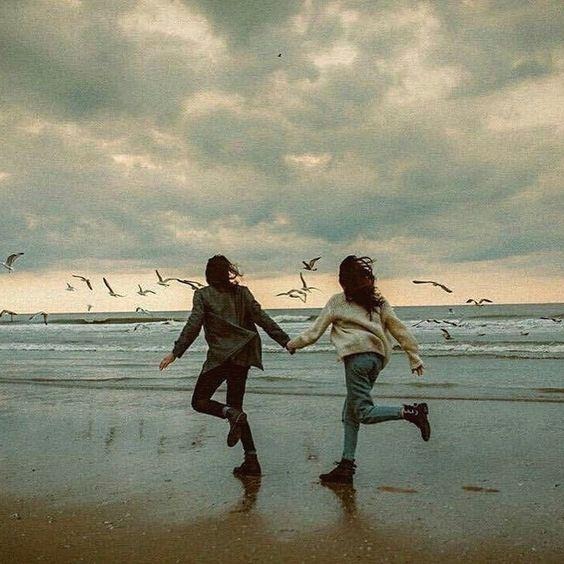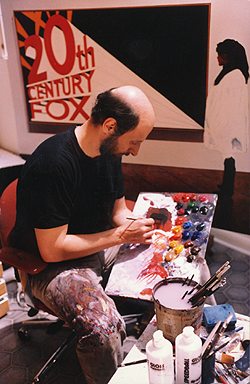There’s a valid distinction, which I would make between
the spiritual and the sacred. I see my particular calling as a painter and a
Jew, drawing from the wellsprings of Torah truths, which imbue each and every
day of a Jew’s life. That for me is spirituality put in practical everyday
terms, from laws concerning kosher food to the observance of pilgrim festivals
in the yearly cycle.
Such a fulfillment – termed a mitzvah in Hebrew for its
sense of duty – is far more attainable than any mystic yearning for the sacred
in other world religions. In terms of my art, it means holiness is everywhere,
waiting to be plucked, like the holy apples about which the mystic rabbis of the
medieval age sang to usher in the Sabbath.
One becomes the other and in that transition, a totally
different experience has come into being. That for me is mystical. I think there
is a wondrous spirituality when the creative process is expressed in paint. It
sets us free to soaring new vistas. Chagall said it well – "Painting was as
necessary to me as bread. It seemed like a window I could escape out of, to take
flight to another world." (Marc Chagall, Painter of Dreams, pg.
90).
There is a full-blooded hearty holiness to Jewish faith
that might catch some people unaware. That is part of the distinction, which I
make between the spiritual and the sacred: a Jew performs a mitzvah
gladly – he runs to the opportunity because it is part of his own soul and his
own spiritual reality.
The enthusiastic joy pervades my thinking and quantifies
my art. I think I’m part of a greater artistic tradition whenever I explore the
nuances in life. I enjoy examining details. There is so much information in a
painting that a viewer might lose sight of in a cursory glance while walking
through a gallery.
You can appreciate that there is an insidious compulsion
to religious motivation for someone who is both Jewish and a painter. Like those
who have followed this path before me, I sense that I’m religious and yet I work
in a medium that some Jews with a spiritual inclination would shun.
Artists must wrestle with spiritual values every time
they put their brush to the canvas. "Spirit in its human manifestation is man’s
response to his You. Man speaks in many tongues – tongues of language, or art,
of action – but the spirit is one; it is response to the You that appears from
the mystery and addresses us from the mystery." (I and Thou, pg. 89)
There have been many notable Jewish abstract painter, but
far fewer Jewish realist painters. Two hundred years ago, a Jew who aspired to
be an artist found his calling as an itinerant craftsman, engraving seals on
pewter plates throughout Bohemia, or bookplates in England.
It wasn’t until the Age of Emancipation that Jewish art
blossomed in Europe. Moritz Daniel Oppenheim, Solomon Alexander hart, Camille
Pissarro, Isidor Kaufman and Maurycy Gottlieb all created memorable works with
artistry on par with their non-Jewish counterparts.
A truthful painting survives close reading by evoking
that inherent mystery in our spiritual existence. This observation, I think, is
key to understanding high-realist painting, making painting analogous to poetry,
rather than the novel form – shortened, pithy, succinct and not always
transparent to elucidation on a first reading.
I find a kind of irony, when you contemplate the span of
man’s life from ‘dust to dust’. Our life is dust, a fact I confirm everyday in
the morning prayers. "All the nations are as nothing before You, as it is
written: the nations are as a drop from a bucket; considered no more than dust
upon the scales! Behold, the isles are like the flying dust." (Isaiah
40:15)
A painter deals with dust – materials that have a very
limited life span. A small detail if you ignore everything else will tell you a
lot about the rest. It may seem futile to make such efforts to perfect art. But
we mirror previous history. We do things over and over again, endlessly striving
for betterment.
My optimism makes me see inevitable progress, in spite of
the setbacks of society. The spirituality of our present workday life is
frequently overlooked. Modern man is too busy making money and working hard to
see divine intervention. Quite simply, there’s an up and down to our life –
we’re down here in our busy material world. The spiritual seems to soar far
above us, far beyond our lowly vantage point.
Art can bridge the up-and-down otherness. There is a
closeness to God springing from daily material things… even paint on a canvas.
Think about the meticulous statements concerning the material not the
spiritual in the Jewish morning prayers. Here is an excerpt concerning
the preparation of incense for the altar:
"The balm is no other than resin which exudes from the
balsam trees. The lye of Carshina was used for rubbing on the onycha to refine
its appearance. The Cyprus wine was used in which to steep the onycha to make
its odour more pungent."
You can almost see the priest with mortar and pestle,
grinding the special ingredients for the service. Truly dust is a metaphor for
human life and human endeavor.
With that in mind, I go back to a further metaphor for my
work. A painting is like a child. I encourage it to grow from the dust. Then it
is strong enough to be independent, to stand freely on its own in a world of
adversity. I can’t keep it in my home forever. But I will visit my work three or
four years later to re-examine a painting that I did. When I’m painting a work,
I see it in parts ‘like the flying dust’. To see it in totality, I have to get
away from a painting for a period of time. Then I can view it as you
might.
Barry Oretksy












